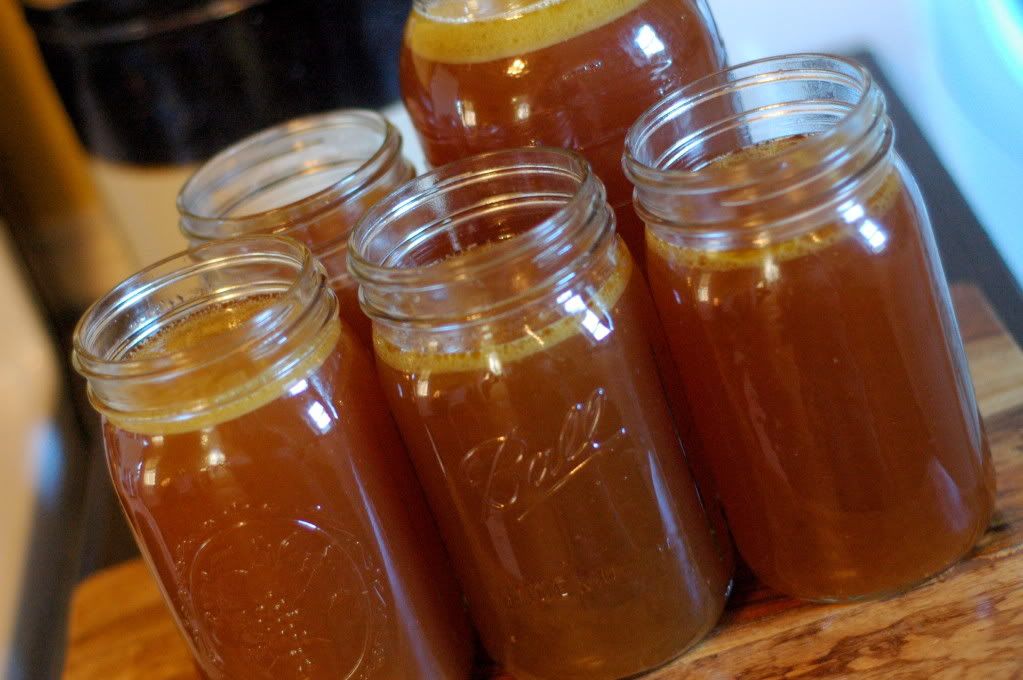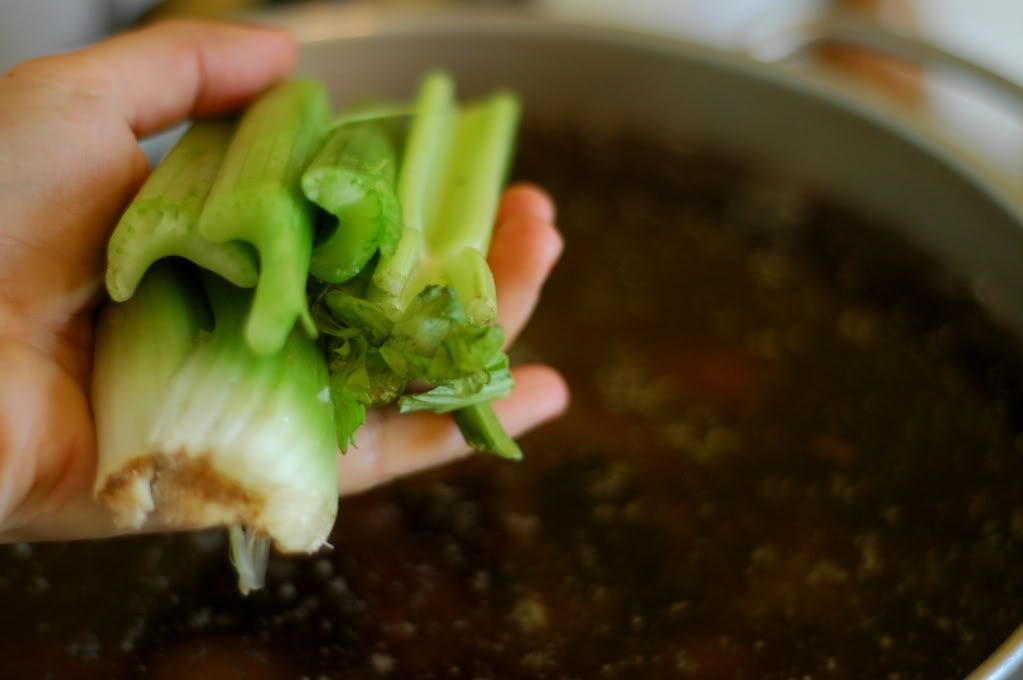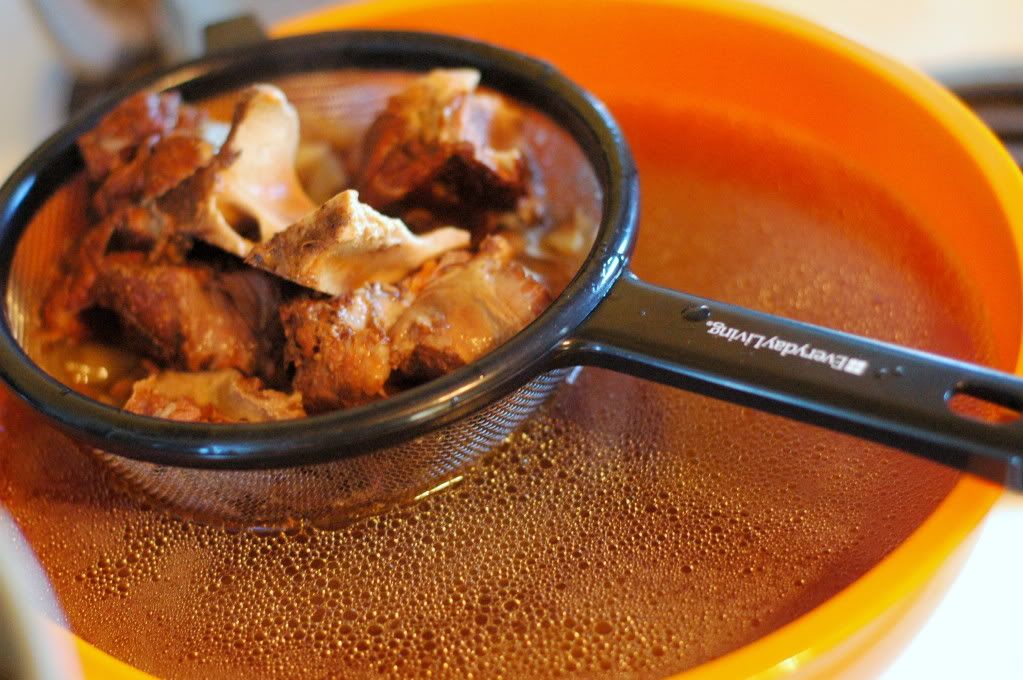Homemade Beef Broth.
I don't know if you knew this about me or not, but...
....
...I love food.
I confess, it's the key to my heart.
And while "key to my heart" sounds romantic, I assure you, this post is anything but romantic. I'm just trying to make it sound pretty, because in reality, this post involves gristle and bones and blood and marrow and fat.
We just totally lost that romantic-food-vibe we had going, didn't we? Dang it.
Oh well. This is a homestead after all. And homesteads involve gristle and bones and blood and marrow and fat. And that's that.
So let's jump to it, shall we?
It's winter time, in case you didn't know. And winter time is a time to feed our souls warmth and goodness that will help to keep us free from colds & bugs. Insert: homemade beef broth. Nothing nourishes our bodies quite like easily absorbed broth, rich in delicious goodness. This broth is my first line of defense against colds this winter, so I'm making a BUNCH of it, baby.
Last year, when we purchased our locally-raised steer for beef, I had them include "soup bones". These bones, which you could also get from a local butcher, impart a rich flavor and gelatin to the broth, that is truly impossible to find on your grocery store shelf. So go get you some. Or, save and freeze bones from homemade roasts throughout the year until it's time for stock making! Let's do this.
Beef Stock
You will need:
- About 4 pounds of beef bones (really, any assortment of meat & bone pieces work!)
- 1/2 cup vinegar
- 2 onions, halved
- 2 carrots, broken into pieces
- 3 celery stocks, broken into pieces
- A pinch of peppercorns (optional)
- A few springs of fresh thyme (optional)
- Water
Step One: If any of the bones have meat on them, place them on a cookie sheet and roast in a 350 degree oven until they are nice and brown. Remove from the oven.
Step Two: Fill a large stockpot with cold water. Add the browned bones, the onions, carrots, celery, vinegar, thyme, and peppercorns. Allow the pot to sit at room temperature for an hour.
Step Three: Bring the pot to a boil, cover, then reduce heat and simmer for 12-72 hours. I do mine for 24 hours. After sufficient simmering, turn the burner off and allow the mixture to reach room temperature. Then, using a strainer, drain the broth from the bones & vegetables (I strain mine in mason jars, which are easily stored in the fridge or freezer). After the stock has cooled, skim the solidified fat from the top of the jar, and discard.
Note: If freezing in mason jars, allow them to cool down in the refrigerator first, which will prevent breaking. Also, don't fill the jars too full so the stock has room to expand.
Oh yum. The potential of this broth is limitless! Stews. Gumbos. Marinades. Sauces. Risotto. It's like the backbone of all that is to be in the kitchen.
After I canned the broth, you know what I did?
I put the bones back into the pot, added more cold water and vinegar, and started simmering another batch! I've heard you can use the same bones four times. Though each resulting batch is less dense, it's still full of flavor and goodness. Talk about milkin' 'em for all their worth.
Oh. And in case you forgot...
...this is my adorable, squeezable, kissable baby.
And that's all.
Beef Stock

- ~4 pounds beef bones ((really, any assortment of meat & bone pieces work!))
- ½ cup vinegar
- 2 onions, halved
- 2 carrots, broken into pieces
- 3 celery stocks, broken into pieces
- A pinch of peppercorns (optional)
- A few springs of fresh thyme (optional)
- Water
-
If any of the bones have meat on them, place them on a cookie sheet and roast in a 350 degree oven until they are nice and brown. Remove from the oven.
-
Fill a large stockpot with cold water. Add the browned bones, the onions, carrots, celery, vinegar, thyme, and peppercorns. Allow the pot to sit at room temperature for an hour.
-
Bring the pot to a boil, cover, then reduce heat and simmer for 12-72 hours. I do mine for 24 hours. After sufficient simmering, turn the burner off and allow the mixture to reach room temperature. Then, using a strainer, drain the broth from the bones & vegetables (I strain mine in mason jars, which are easily stored in the fridge or freezer). After the stock has cooled, skim the solidified fat from the top of the jar, and discard.
-
Note: If freezing in mason jars, allow them to cool down in the refrigerator first, which will prevent breaking. Also, don't fill the jars too full so the stock has room to expand.







